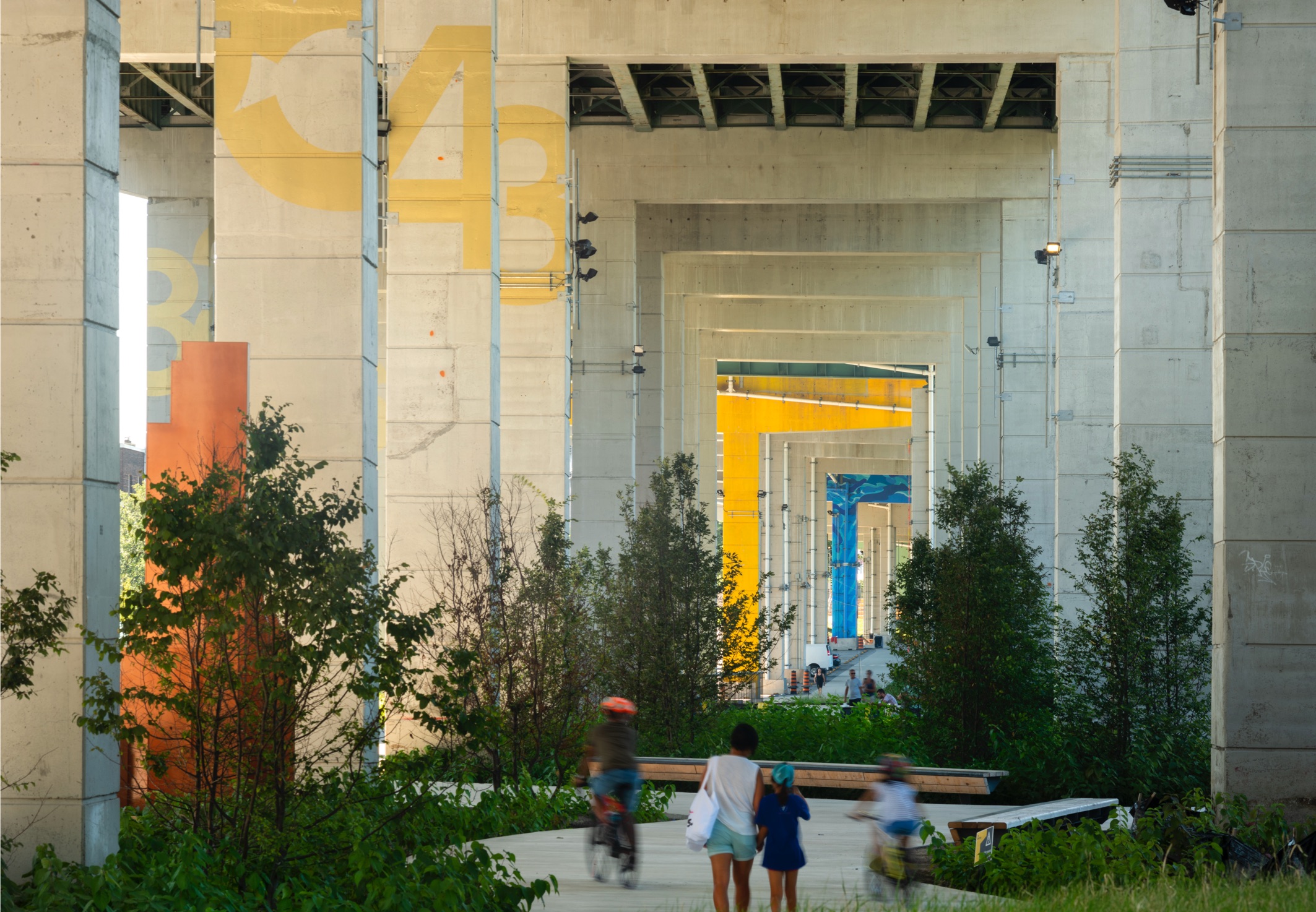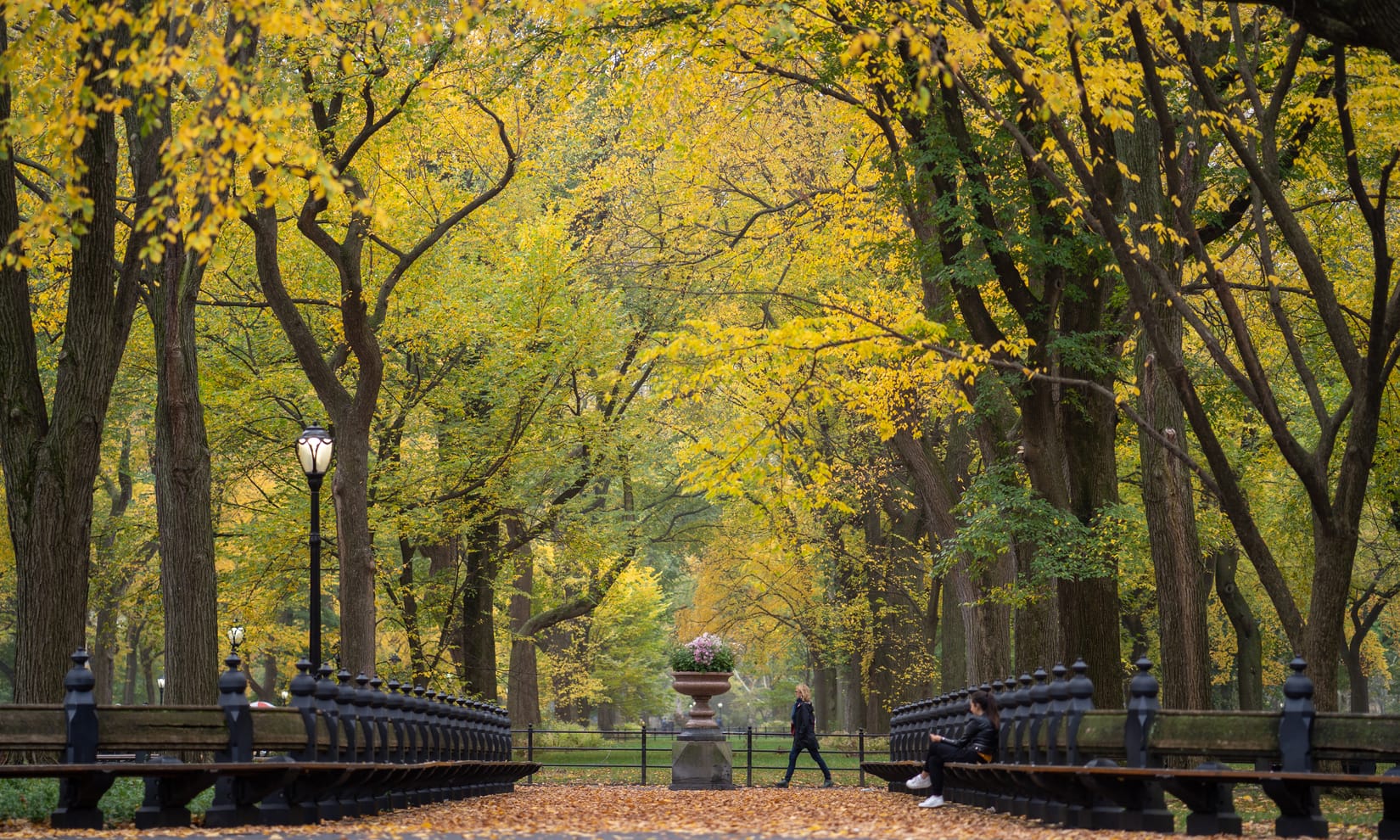Using Conservancies to Build Great Public Spaces
Summary
Public-space conservancies, non-profit organizations that manage publicly owned land through long-term agreements with government, offer Toronto a way to create and sustain its most vibrant civic places. The Bentway has proven that when public ownership is paired with independent management, philanthropy, and community programming, a neglected space can become one of the city’s defining landmarks. But currently each new initiative with these same aspirations (and indeed each new phase of The Bentway itself) still requires bespoke agreements, faces uncertain funding, and must manage complex coordination across City divisions.
A clear Conservancy Partnership Framework can change that. By setting out how non-profit stewards manage public land, how funding and accountability work, and where the City welcomes new partnerships, Toronto can make shared stewardship the norm rather than the exception. With predictable rules and open invitations, the city can unlock new investment, creativity, and civic pride—building more wonderful places cared for with the same ambition that makes The Bentway thrive.
Bold Goal: By 2027, Toronto will adopt a citywide Conservancy Partnership Framework and see at least three new conservancy-managed public spaces by 2030.
Background & Motivation
Toronto’s next era of city-building depends not only on what we construct, but on how we care for the shared spaces that define civic life. Across North America, cities are adopting new governance models for complex public spaces — ones that require more active management, more cross-sector collaboration, year-round programming, and deeper community involvement than traditional park operations can sustain.
A growing number of cities now rely on public space conservancies: non-profit organizations that manage publicly owned land through long-term agreements with government. Under this model, ownership remains public, but operations, programming, and fundraising are handled by an independent entity. Conservancies are part of a trajectory of new actors joining the City in its responsibility to care for our shared spaces. They build on the success of existing volunteer-run “friends of” groups and BIA efforts to supplement and amplify daily public realm maintenance and programming to achieve a higher level and more consistent standard of operations. Conservancies blend the stability of public ownership with the agility and ambition of the non-profit and philanthropic sectors. They allow spaces to be managed more like cultural venues — flexible, responsive, and accountable to both the public and their supporters.

Toronto’s best-known example is The Bentway1, beneath the Gardiner Expressway — founded via a partnership between private donors and the City of Toronto – that has come to redefine what a civic space can be in our city. Conceived in 2015 as Project: Under Gardiner, the initiative was made possible by a $25-million philanthropic gift from Judy and Wilmot Matthews2. The City matched that commitment with up to $10 million in capital funding, enabling the design, construction, and early activation of Bentway Phase 1. Together, the City and the founders evaluated different governance structures that could sustain the unique space and partnership. This led to the creation of an independent non-profit — the Bentway Conservancy — to operate, maintain, and program the new public realm, while leading planning and design for its future growth (with more Bentway sites in development now)
That partnership has delivered extraordinary returns. The Bentway attracts hundreds of thousands of visitors annually and has become a backyard park for hundreds of thousands of nearby residents as well as a signature Toronto destination, combining public art, recreation, and community programming under an elevated expressway once seen as a barrier. The model also introduced new expectations for governance and funding: an independent organization responsible for operations and fundraising, with the City providing baseline capital and institutional support.

Yet The Bentway also reveals the structural limits of Toronto’s current approach. As the organization advances growth plans, each future phase of the project has required unique approvals and exemptions. Despite goodwill, good intentions, and heavy individual efforts of many champions within the City, the lack of a clear framework makes everything far harder than it ought to be. The Conservancy must navigate many divisions — Parks, Transportation, Engineering and Construction Services, Economic Development and Culture, and others — each with distinct mandates, funding models, and risk policies. Even successful precedents often must be re-argued: permissions or exceptions approved and proven out in one phase are not automatically recognized in the next. This creates uncertainty, adds cost, and discourages other civic partners from taking on similar roles.
Toronto’s current funding systems compound the challenge of replicating this model, because no structure for sustained City operating funding for conservancy partnerships exists. Ordinary park budgets are still largely based on area and standardized service levels rather than visitor volume, programming intensity, or the complexity of managing hybrid spaces like The Bentway. The City’s Auditor General has noted that service levels do not consistently account for usage or performance3, leaving highly programmed spaces systematically under-resourced. There is a clear opportunity for city reforms to address both of these challenges.
The Bentway demonstrates that public–philanthropic partnership can elevate public space without displacing public accountability. When the City signaled clear commitment — matching private capital, recognizing the non-profit steward, and providing flexible support — private and philanthropic investment followed. Where such alignment is missing, potential partners often hesitate. Philanthropy in Toronto is strong but cautious: many donors are willing to invest in the public realm, but only where they trust that their contributions will be used effectively and transparently.
The City should move from one-off exceptions to a standardized Conservancy Partnership Framework that defines how non-profits can manage and maintain public land in collaboration with government. This framework should outline clear legal, operational, and funding arrangements — including how City operating support is allocated based on intensity of use, how it can be redistributed to assist conservancies in their ongoing operations, and how philanthropic or earned revenue can supplement that base.
Equally important, the City should signal where this model could apply. Not every park or public space warrants or demands conservancy management, but many high-traffic or high-profile areas could benefit from enhanced stewardship. The City could begin by identifying a shortlist of candidate sites — places that already draw heavy use, have strong community constituencies, or present unique management challenges. Sites such as Riverdale Park, David Crombie Park, Biidaasige Park, Hanlan’s Point, or sections of the Waterfront and Railpath corridors exemplify the kind of locations where this model could add value: highly visible, widely loved, and operationally complex.
The goal is not to prescribe where conservancies must form, but to establish a transparent process for identifying opportunities — where public space could be elevated through shared stewardship. By doing so, Toronto can create a pipeline of projects ready for partnership and investment, turning civic ambition into deliverable outcomes.
A standardized framework and proactive identification of opportunities would not privatize public space — they would professionalize its care. By aligning funding with intensity of use and programming ambitions, clarifying responsibilities across divisions, and providing certainty for public, private, and philanthropic partners alike, Toronto can unlock a new generation of world-class public spaces — places that are vibrant, cared for, and unmistakably public.
Real World Examples
New York – Central Park Conservancy
New York pioneered the modern conservancy model through the Central Park Conservancy4, which has managed the park since 1980 under a formal agreement with the city. The non-profit raises the majority of the park’s operating budget and oversees day-to-day care, capital projects, and programming while the land remains public. The result is a global benchmark for quality and stewardship, showing how stable governance and philanthropy can sustain a major civic space over decades.

Philadelphia – Fairmount Park Conservancy
Philadelphia’s Fairmount Park Conservancy5 manages a 2,000-hectare network of urban parks through a public–non-profit partnership with the City. It leverages philanthropy, grants, and community programming to restore historic landscapes and deliver year-round events. The conservancy structure allows the city to focus on baseline maintenance while the non-profit drives design, investment, and activation at a higher level of ambition.

Chicago – Millennium Park Foundation
Millennium Park6, built as a civic and cultural anchor downtown, operates through a non-profit foundation that coordinates events, sponsorships, and maintenance in partnership with the City of Chicago. The City retains ownership but benefits from private support and governance stability. The foundation model has kept the park’s public spaces, art, and programming at world-class standards while relieving the city of full operational responsibility.

Toronto – The Bentway
The Bentway is Canada’s first urban conservancy and Toronto’s leading example of shared stewardship. Developed through a partnership between the City and private donors, it transformed a stretch of infrastructure into a cultural destination and major recreation destination visited by hundreds of thousands each year. Its non-profit operator programs, maintains, and animates the space under a long-term use agreement with the City—proof that Toronto can match global best practice when clear governance and civic ambition come together. The Bentway has been working with the City of Toronto to plan for growth in the coming years, guided by the jointly developed Under Gardiner Public Realm Plan7 – a roadmap for future improvements along the full 7km over the Gardiner.
What Must Be Done
Toronto needs a clear, repeatable framework to enable non-profit conservancies to manage and program major public spaces in partnership with government. The Bentway shows what this model can achieve—but also how difficult it remains without predictable processes, clear funding mechanisms, and coordination across City divisions. Four focused reforms can make this approach easier to launch and sustain.
Create a standardized Conservancy Partnership Framework
At present, every conservancy-style project is treated as a bespoke negotiation, requiring unique legal agreements, exemptions, and funding terms. The City should codify how non-profit stewards can manage public land through long-term use agreements with consistent expectations for governance, accountability, and City participation, while still accounting for the unique conditions of each partnership and site. This framework would give future partnerships a clear pathway while reducing the administrative burden on both the City and its partners.
- Develop standardized legal and operating templates for public-space partnerships, refined from the Bentway’s Use Agreement and vetted across key divisions.
- Establish a single coordinating table or designated lead division—ideally under a Deputy City Manager—to negotiate and monitor all conservancy agreements.
- Recognize and codify existing precedents, such as previously approved design standards or access exceptions, so that each new phase or project does not have to reapply for the same permissions.
- Publish the framework and templates publicly, signaling that the City supports conservancies as a legitimate and replicable governance model for complex public spaces.
Modernize how the City funds and supports operations
Toronto’s park operations systems were designed for traditional, lower-intensity parks, with budgets structured around standardized service levels and area-based allocations. That approach is effective for most parks but falls short for civic destinations with heavy visitation, year-round programming, or event-driven activity. For these spaces, the City should adopt an operating model that reflects both usage and partnership, bringing forward a municipal support model for the complexity of operations and the resources conservancies bring.
- Introduce a dual-funding structure: a base contribution comparable to standard park maintenance, supplemented by an allowance negotiated according to visitor volume, programming hours, or co-investment ratio.
- Allow City funding to be released to conservancies on a matching basis once philanthropic or sponsorship commitments are confirmed, ensuring public funds leverage private investment.
- Require annual public reporting by conservancies, including audited financials and operating metrics, to maintain transparency and ensure accountability for both public and private resources.
- Formally recognize “high-intensity public spaces” as a distinct operational category within Parks and Public Realm divisions, with tailored service standards and maintenance expectations.
Coordinate governance and approvals across City divisions
Conservancies like The Bentway often navigate overlapping responsibilities between public and private actors and among multiple City divisions—Parks, Transportation, Engineering and Construction Services, Economic Development and Culture, and others. Each has its own mandate, budget process, and risk tolerance. To scale this model, Toronto needs to coordinate internally with the same efficiency expected of its partners.
- Establish a cross-divisional Conservancy Coordination Table, chaired by a Deputy City Manager, to align decisions on policy, permitting, and capital planning.
- Designate a lead division to serve as the primary interface for each conservancy, ensuring consistent communication and accountability throughout project lifecycles.
- Recognize previously approved solutions, such as design standards or access exceptions, across departmental processes to prevent redundant approvals.
- Create joint review processes for capital works, and maintenance coordination to streamline project delivery and reduce administrative friction.
Identify and invite opportunities for new partnerships
Not every park or public space requires or demands conservancy management, but some clearly would benefit from enhanced governance and care. The City should signal where this model could add value and actively invite collaboration from philanthropic, corporate, and community partners. This will help match civic ambition with the operational capacity to sustain it.
- Conduct a citywide assessment to identify high-traffic, high-visibility, or operationally complex sites where alternative management models could improve outcomes.
- Publish a short list of illustrative candidate sites—such as Riverdale Park, David Crombie Park, Biidaasige Park, Hanlan’s Point, or sections of the Waterfront and Railpath corridors—to demonstrate the type of spaces suited to this approach.
- Issue a call for expressions of interest inviting partners to explore stewardship models for shortlisted or future sites, supported by City technical and planning assistance.
- Provide early-stage feasibility funding for pilot partnerships, enabling non-profits to test governance and financial models before entering long-term agreements.
Common Questions
Won’t conservancies privatize public space?
No. The land and assets remain publicly owned and subject to City oversight. Conservancies are non-profit, often charitable partners that manage operations and programming under formal agreements approved by Council and supplement city funding. They expand capacity without surrendering public control—adding care, creativity, and community engagement that the City alone cannot always provide.
Wouldn’t this create unequal quality between parks?
These models are meant for select, high-intensity spaces where traditional operations don’t fit—not for every park. Standard parks funding would continue as today, while conservancies supplement resources for the most complex or heavily used sites. The framework ensures public benefit, accountability, and equitable access, regardless of who manages the space.
Does this mean higher costs for the City?
Not necessarily. The City would continue contributing to capital costs and core operations but share responsibility with partners who bring philanthropic, sponsorship, and earned revenue. The goal is not to reduce City investment but to leverage it—every public dollar unlocking several more in private and community support. The funding pie gets bigger, not smaller.
Won’t partnerships slow approvals or add bureaucracy?
The goal should be to simplify approvals and lessen bureaucratic barriers, while maintaining accountability. A standardized framework would replace one-off negotiations with clear rules, model agreements, and coordinated oversight across divisions. This predictability would make it faster and easier to launch new projects, while maintaining strong accountability and consistent standards.
Is this only for downtown or high-profile spaces?
No. The framework would apply wherever intensity, complexity, and civic value justify a different management model. While many examples are downtown today, future conservancies could emerge in waterfront, cultural, or regional park settings—anywhere community partners are ready to co-invest in quality and care.
Conclusion
Toronto’s best public spaces show what the city is capable of when creativity, community, and good governance come together. The Bentway proved that a public-space conservancy can turn underutilized infrastructure into a civic landmark—maintained, programmed, and loved by the people it serves. What it also revealed is that Toronto’s current systems make this success the exception, not the rule.
By establishing a clear Conservancy Framework, modernizing how operations are funded, and inviting new partners to help care for major civic spaces, the City can multiply what works. These changes would not add bureaucracy or privatize the public realm—they would make it easier to deliver beautiful, well-managed places across the city.
Toronto’s growth demands more than new buildings. It needs great public spaces—maintained with pride, animated with life, and built to last. With the right framework, Toronto can fill its parks, waterfronts, and gathering places with that same ambition, creating a network of civic spaces as extraordinary and imaginative as the city itself.



